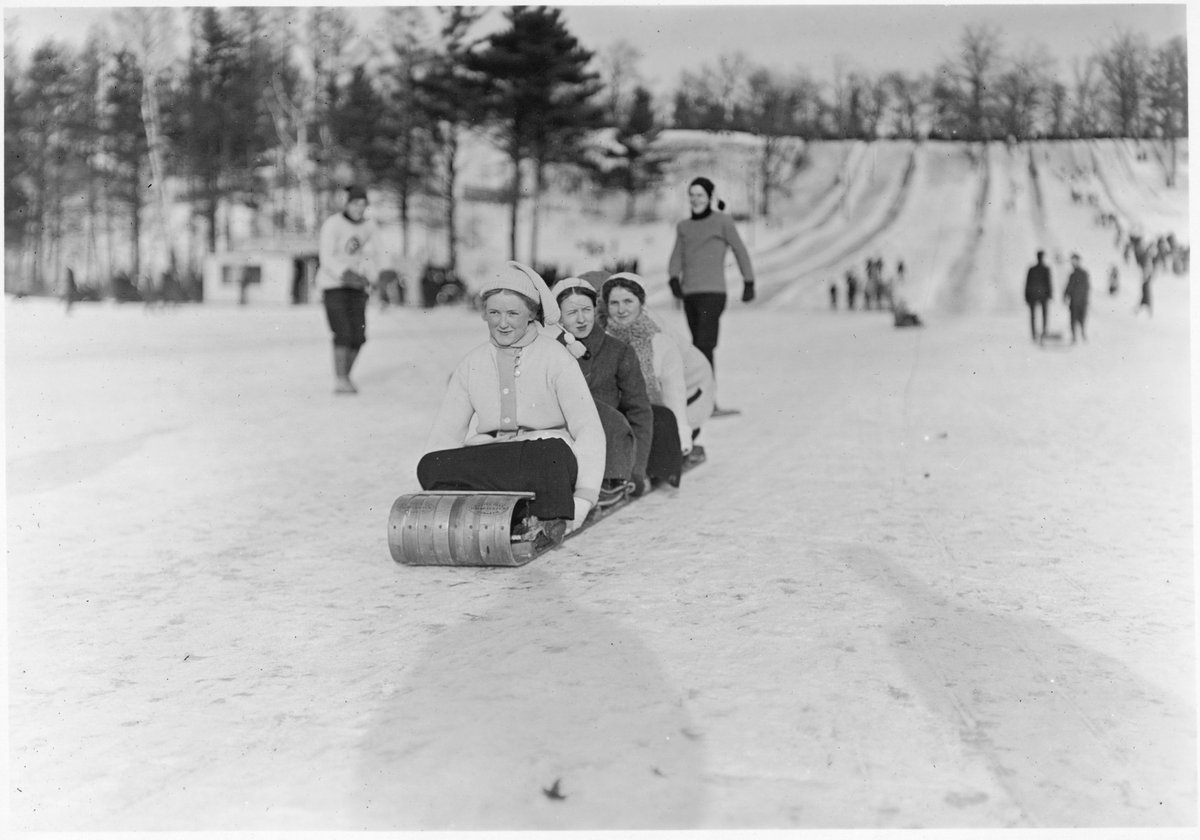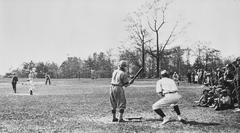
High Park Toronto Visiting Hours, Tickets, and Attractions Guide
Date: 14/06/2025
Introduction
High Park is Toronto’s largest and most iconic public park, spanning over 400 acres of natural landscapes, rare ecosystems, and cultural landmarks. Celebrated for its Indigenous heritage, Victorian-era history, and conservation efforts, High Park is a year-round destination for locals and visitors alike. This comprehensive guide details High Park’s visiting hours, ticketing, accessibility, main attractions, travel tips, and cultural significance, ensuring you have all the information needed for an enriching visit (High Park Nature; Neighbourhood Guide; City of Toronto).
Table of Contents
- Introduction
- Indigenous Stewardship and Ecological Significance
- Historical Overview: The Howard Legacy and Park Evolution
- Visitor Information: Hours, Tickets, and Accessibility
- Top Attractions and Activities
- Getting There: Transit, Cycling, and Parking
- Special Events and Cultural Highlights
- Facilities, Amenities, and Travel Tips
- Frequently Asked Questions (FAQ)
- Conclusion
- References
Indigenous Stewardship and Ecological Significance
High Park’s story begins over 11,000 years ago with continuous Indigenous stewardship by the Huron-Wendat, Petun, Seneca, and Mississaugas of the Credit. The Dish With One Spoon Wampum Belt Covenant governed peaceful cohabitation and resource sharing in the region. Indigenous land management practices, including controlled burns, fostered the globally rare Black Oak Savannah, a diverse habitat that remains central to High Park’s ecological identity (High Park Nature).
Today, the Indigenous Land Stewardship Circle collaborates with the City of Toronto to restore traditional ecological knowledge and stewardship, with initiatives such as medicine gardens, the Turtle Protector Program, and pesticide bans (Indigenous Land Stewardship Circle).
Seventy-three hectares of the park are designated an Area of Natural and Scientific Interest (ANSI), featuring ancient Black Oak stands, tallgrass prairie, wetlands, and Grenadier Pond, all supporting rich biodiversity (High Park Nature PDF).
Historical Overview: The Howard Legacy and Park Evolution
High Park’s modern era began in 1836 with John George Howard, Toronto’s first city surveyor, who established his estate “High Park” and built Colborne Lodge, a Regency-style home that remains a museum today (Neighbourhood Guide; Toronto.ca – Colborne Lodge). In 1873, Howard and his wife Jemima donated the estate to Toronto with the stipulation that it remain free for public use and as natural as possible.
The park expanded to nearly 400 acres, evolving with the addition of recreational facilities, gardens, and the High Park Zoo. Despite urban growth and infrastructure changes, conservation of rare habitats and natural features has remained a priority (High Park Nature PDF).
Visitor Information: Hours, Tickets, and Accessibility
- Park Hours: Open daily, year-round, from 5:30 a.m. to midnight.
- Admission: Free; no ticket required for general entry or the zoo. Some special programs, guided tours, or museum entries (e.g., Colborne Lodge) may require a nominal fee or donation.
- Accessibility: Many paved trails, washrooms, and key facilities are barrier-free. Wheel-Trans service and accessible parking are available at major entrances. The park is progressively improving accessibility features (City of Toronto).
Top Attractions and Activities
Nature and Wildlife
- Black Oak Savannah & Nature Trails: Explore one of Canada’s largest remnants of this endangered ecosystem. Interpretive trails reveal rare grasses, wildflowers, and century-old oaks (High Park Nature: Black Oak Savannah).
- Grenadier Pond: Ideal for birdwatching, photography, and catch-and-release fishing. The pond also plays a key role in supporting amphibians, fish, and migratory birds (High Park Nature: Wildlife).
Family-Friendly Destinations
- High Park Zoo: Home to llamas, bison, peacocks, capybaras, and more. Open daily from 7:00 a.m. to dusk (High Park Toronto).
- Jamie Bell Adventure Playground: A community-built wooden playground with towers, bridges, and slides.
Gardens and Seasonal Highlights
- Hillside Gardens: Landscaped beds, fountains, and themed displays shine from spring through summer.
- Cherry Blossom Grove: Over 2,000 sakura trees bloom in late April–early May, attracting tens of thousands. Peak bloom features crowd controls and vehicle restrictions (JustInPlusLauren).
History & Culture
- Colborne Lodge Museum: Explore Toronto’s early history and the Howard family’s legacy with guided tours and heritage gardens (Toronto.ca – Colborne Lodge).
- Public Art & Sculpture: View installations from the 1967 Toronto International Sculpture Symposium (Wikipedia).
Sports and Recreation
- Tennis, Baseball, Soccer, and Basketball: Multiple courts and fields; some require memberships or reservations (Wikipedia).
- Swimming & Ice Skating: Outdoor summer pool and winter rinks are available.
- Cycling & Running Trails: Paved and natural-surface paths accommodate walking, jogging, and cycling.
Guided Tours and Nature Education
- High Park Nature Centre: Offers educational programs, nature walks, and stewardship workshops focused on conservation and Indigenous knowledge (High Park Nature).
- Trackless Train: Seasonal rides with stops at major attractions—great for families and visitors with mobility challenges (Toronto For You).
Off-Leash Dog Area
- Dog Hill: Fenced, leash-free area in the park’s north end, with water stations and trails (Toronto For You).
Getting There: Transit, Cycling, and Parking
By Public Transit
- Subway: High Park Station (Line 2) is the closest; Keele and Runnymede stations are within a short walk (City of Toronto).
- Streetcar/Bus: Routes 506 Carlton and 80 Queensway serve the area. The 203 High Park Bus operates on weekends/holidays in summer (City of Toronto Movement Strategy).
By Car
- Parking: 276 spaces inside the park; over 1,200 additional spots nearby. Vehicle access is restricted on weekends/statutory holidays and during special events—public transit is strongly encouraged (Sakura in High Park).
By Bicycle or On Foot
- Bike Lanes and Entrances: Dedicated lanes and six paved trail entrances. Bike racks throughout the park; cycling is allowed on designated paths.
Special Events and Cultural Highlights
- Cherry Blossom Festival: Late April–early May; draws large crowds—public transit and pedestrian access only during bloom (Sakura in High Park).
- Shakespeare in High Park: Outdoor summer performances in the amphitheatre.
- Harvest Festival: Autumn event near Colborne Lodge with family activities (Toronto For You).
- Seasonal Nature Walks: Guided by the Nature Centre and local groups.
Facilities, Amenities, and Travel Tips
- Restrooms: Located throughout the park, including accessible options.
- Food & Drink: Grenadier Café is open year-round; food trucks and concessions operate seasonally.
- Picnic & BBQ Areas: Reservable sites near Grenadier Pond, the zoo, and playgrounds; group bookings recommended during peak times.
- Allotment Gardens: 109 plots for community gardening (BlogTO).
- Safety: Stay on marked trails, keep dogs leashed outside off-leash areas, and do not disturb wildlife or plants.
Travel Tips:
- Visit on weekdays for fewer crowds.
- Dress for the weather and wear comfortable shoes.
- Bring water and snacks, especially for long walks.
- Check City of Toronto’s website for current updates on hours and events.
Frequently Asked Questions (FAQ)
Q: What are High Park’s hours?
A: Open daily from 5:30 a.m. to midnight, year-round.
Q: Is admission free?
A: Yes, entry to the park and zoo is free.
Q: Are dogs allowed?
A: Yes, with leash-free and on-leash areas.
Q: When do cherry blossoms bloom?
A: Usually late April to early May, lasting 1–2 weeks.
Q: Is High Park accessible?
A: Many paved paths and facilities are accessible; Wheel-Trans and shuttle improvements are ongoing.
Q: How do I get to High Park by TTC?
A: Take the subway to High Park Station (Line 2) or nearby stations; multiple bus and streetcar routes serve the area.
Conclusion
High Park is Toronto’s premier urban park, uniquely blending natural habitats, Indigenous stewardship, historical landmarks, and vibrant community life. Free admission, accessible amenities, and a rich calendar of events make it ideal for families, nature enthusiasts, and culture seekers. For the best experience, visit during off-peak hours, use public transit, and follow all park guidelines to help preserve this cherished green space for generations (City of Toronto; High Park Nature; Sakura in High Park).
Plan your trip to High Park, download the Audiala app for guided tours and real-time updates, and follow us on social media for news and tips on Toronto’s best outdoor destinations.
References
- High Park Nature, 2025, Indigenous History and Ecology
- Neighbourhood Guide, 2025, High Park History and Amenities
- City of Toronto, 2025, High Park Visitor Information
- Destination Toronto, 2025, High Park Attractions
- BlogTO, 2025, High Park Family and Recreational Facilities
- Sakura in High Park, 2025, Cherry Blossom Season Information
- JustInPlusLauren, 2025, Cherry Blossom Viewing Guide



























































































































































































